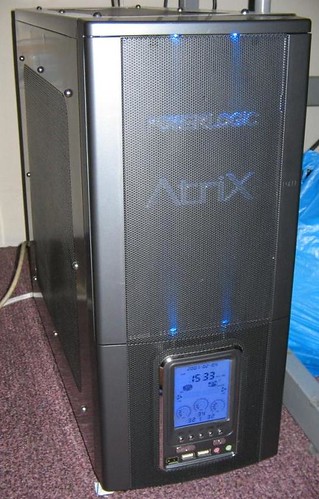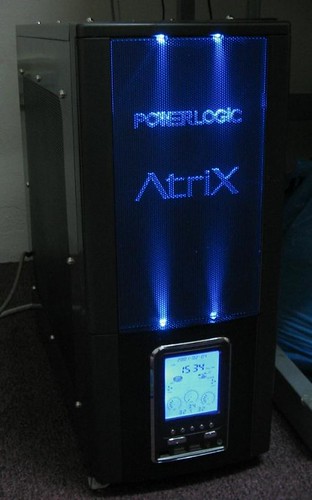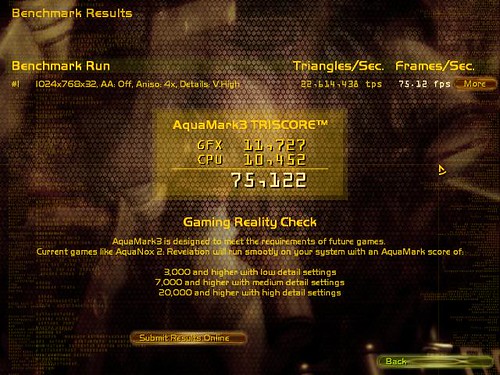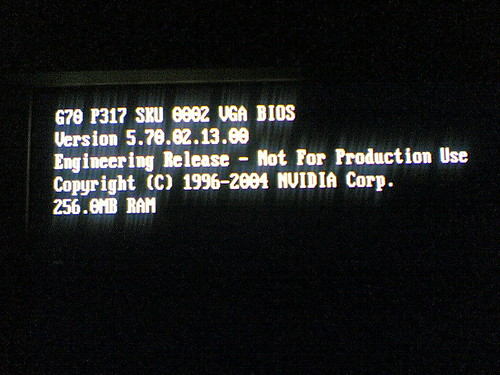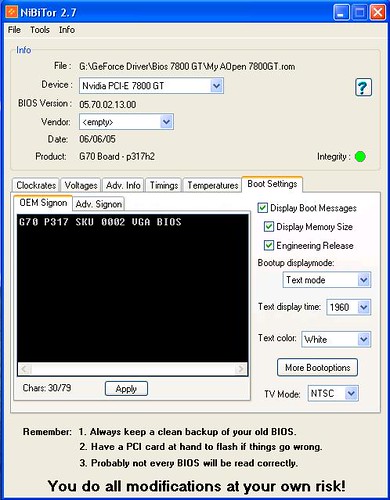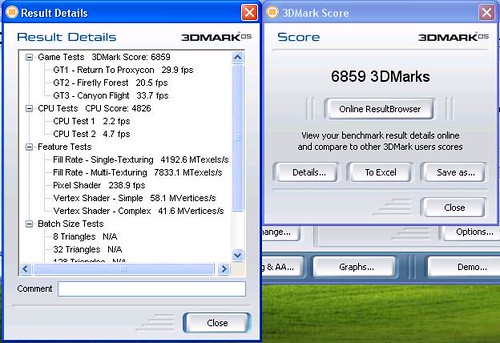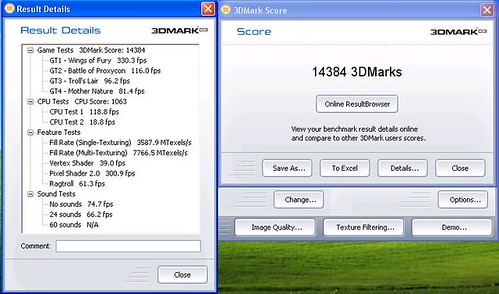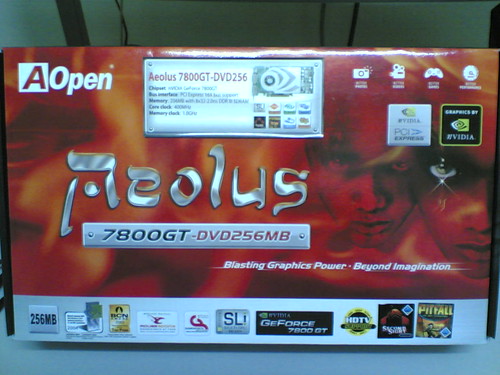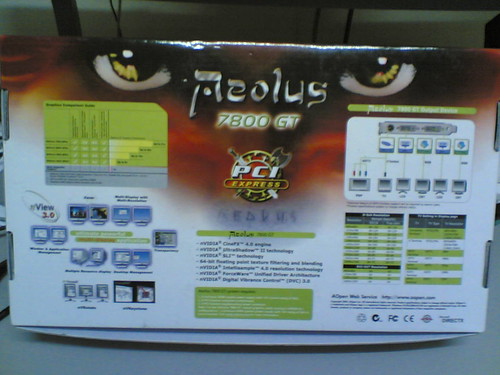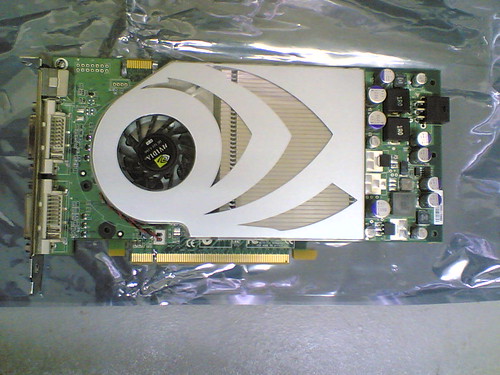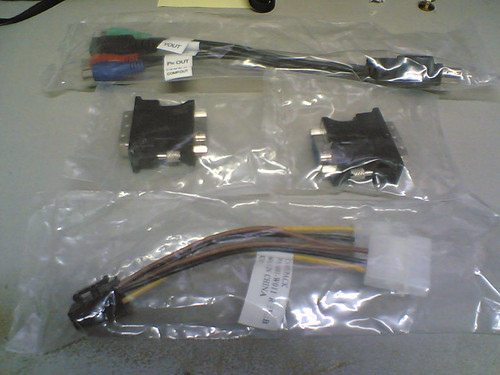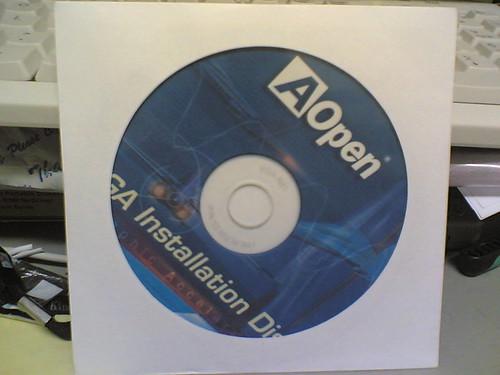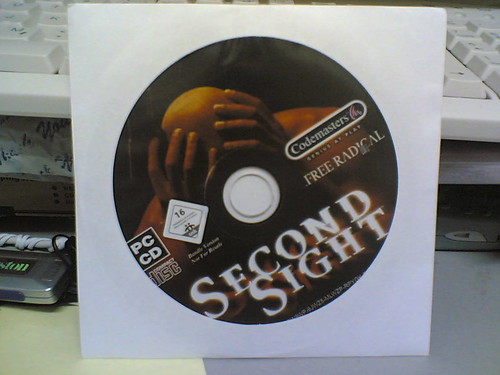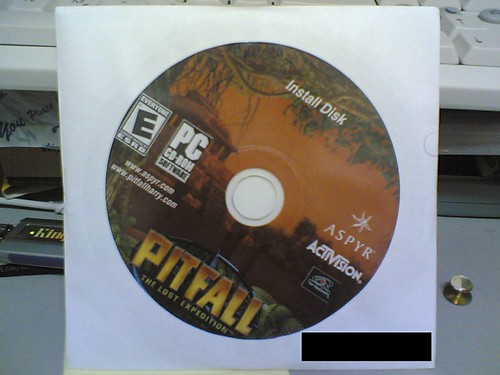I should have included another words of the day before this: Quad SLI, but then I think that it's just another extension to SLI campaign so no biggie here.
Okay, based on the readings at HardOCP, RojakPot and a few forums, it appears that NVidia has another trick up its sleeves, waiting to be exposed all this time. Yep, physics is the way to go according to the rhythm of the future gaming.
Introduction
I think this all rooted from the idea of 'multiple processors' for PC processing power. I imagine that 'siliconised' people in Intel, AMD, NVidia and ATi had been too precipitated with the idea of 'race for more MHz". Later on, we witnessed the birth of multicore CPU as well as multiple GPUs (SLI, Quad SLI soon and Crossfire) on the mainstream computing.
With the power of multiplicity in hand, people start thinking of how to make use of those. Therefore we are served with the ideas of multithreaded applications and soon, gaming as well. The benefits of multicore CPU are already here to enjoy, and today, multiple GPU from NVidia, or SLI to be exact, adds another weapon to its gaming arsenal.
SLI Physics
I think that the collaboration between Havok and NVidia in creating this feature hits some sweet spots at various aspects. While I'm mostly requoting what many reviewers have said, I realised that many of my opinions sit on the same track as theirs.
In games, physics is one of the main components that makes up to the realism in gaming, besides graphics. Since the birth of GPU, graphics complexity has been taken care of nicely, thus what we see today is a steady progression of adding more 'eye-candy, graphics features, pixel processing, shaders, vertex, DirectX etc etc" scenario. While all is good, we miss the revolutionary in gaming. I bought my GeForce DDR 6 years ago so basically it has been since then.
Today, NVidia teams up with Havok to integrate the power of Havok FX engine into the GPU. We know that Havok implements a software approach in bringing the realism in physics, contrary to AGEIA's solution, PhysX which employs a dedicated hardware to do so.
Basically, the idea is, in SLI configuration, the second GPU is dedicated to be the physics processing power while the first GPU concentrates on the graphics as usual. The rule is that the hardware has to support SM3.0 (since this is what Havok FX use to calculate physics) and the game must also support Havoc FX. Simply said, we just have to install a proper Forceware driver (supporting Havok FX ) for our Geforce 6 or 7 series and play any supporting games to see its effects. On Havok's side however, they mentioned that this
works on any SM3.0 graphics card, which means that we cannot rule out ATi's X1800 and X1900 series.
NVidia adds some further notes that the physics engine also applies to NVidia
single card. They also recommend that the minimum graphics card model to implement this is GeForce 7600. Now, adding two notes above, I wonder how taxing the situation can be.
The best part of the story is, no additional hardware is needed! This collaboration hits the spot where the install base for the hardware is already huge, and I reckon the rate of adoption is going to be fast. I also reckon that this is another boost from NVidia to encourage gamers to adopt for SLI.
The Actual TruthPeople immediately starts comparing SLI Physics with AGEIA's PhysX. It is then made obvious that NVidia solution does not only differ in terms of hardware/software approach, but it also goes beyond which gaming physics it is targeting. Simply said, SLI Physics
acted on the physics on the game such that it will enhance the eye-candy aspects, not the entire gameplay. It's kinda difficult to put my own words here, but here's an excerpt from
TechReport regarding SLI Physics:
"
Unlike other approaches, Havok FX handles physics computations directly on the GPU, allowing it to calculate and render object movement with minimal readback to the CPU. However, Havok FX is limited to what's referred to as "effect physics," or physics that don't affect gameplay. Havok prefers to keep gameplay physics on the CPU, leaving Havok FX with the physics calculations necessary for visual effects and other eye candy. Fortunately, modern GPUs apparently do a pretty good job of crunching those types of physics calculations."
This is another point where it differs from PhysX. PhysX offers an all-out physics computation inside a dedicated silicon, removing it 100% from the CPU.
Anyway, I think SLI Physics removes a significantly large portion of physics calculation off the CPU, so in this department, it is not too shabby either.
The RationalityWhen SLI Physics is announced, one thing immediately crop up in my mind: load balancing. How do we utilised two GPUs in SLI to perform physics effectively? Having read NVidia's implementation and a few flaming discussions, the current setup will utilise the whole second GPU to be a dedicated physics calculator.
One question:
how 'whole' is the 2nd GPU going to be utilised in terms of transistors utilisation?Looking at TechReport's excerpt above, GPUs can do a pretty good job at calculating physics, but the question remains, at what percentage of a whole GPU? I am no expert in semiconductor and CPU manufacturing, but since many parts of a GPU are tailored only for processing graphical data: pixel shaders, vertex shaders , I would say that quite a large portion of a GPU is useless for calculating physics. The only part that I think is relevant is the ALU, where the core mathematical calculation is performed. Of course, this is my own biggest mystery around the issue, someone alse out there might have the answer.
Whatever it is, this particular implementation raises mostly economical issue for SLI adopters. Is it worth sacrificing one GPU for physics, running only on one GPU for graphics in SLI? This issue is so mind-boggling that one might wonder the impact on graphics performance when switching SLI Physics on. Logical thinking would indicate that framerates will be reduced by doing so.
If the performance of that 2nd GPU can compensate for the loss of graphical computing power, that's fine. The problem is, I just don't think so. How limiting is the physics computation in gaming actually? There are no numbers that can describe this other than the pure virtue of megahertz. Still, if we say that 650 MHz core clock of 7900 GTX are used solely to calculate physics, is the performance competitive with AMD FX-57 in doing the same thing?.
Still, load balancing is the best implementation in this kind of situation. Fortunately, it will be supported soon, although not in the early version of SLI Physics. That's a relief.
AGEIA's PhysXThis is where a dedicated AGEIA's card comes into consideration. The solution seems promising in all areas except in the supporting games department, where the competition is tight. Havok has secured many game developers with excellent games, while AGEIA's, in my opinion, has Epic Games support for its most-awaited Unreal3 engine, along with a few other prominent game developers. To make things favour their way, AGEIA provides PhysX SDKs for free for all developers.
$200++ for a PhysX card? I'd say that a very good solution IF you want to compensate for your lack of affordability to buy high-end gaming CPU.
Summing It UpI praise NVidia and Havok actually, for coming out with such solution using existing platform. An innovation at its best. We are yet to see the actual gaming rig in action under SLI Physics setup, but I hope when we do, we will know where our money goes to.
Further readings:
Adrian's RojakPot and
TheInquirer.
